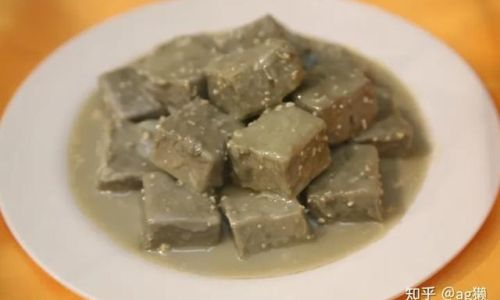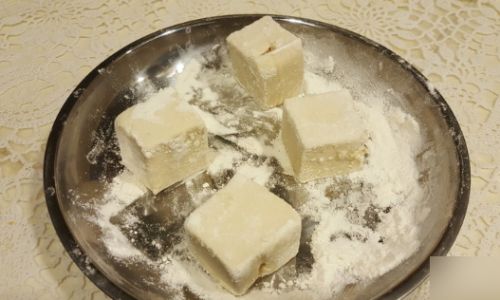Stinky tofu, a fermented tofu dish renowned for its pungent aroma and rich flavor, is a beloved street food and culinary staple in many Asian cuisines. Despite its polarizing smell, this dish has gained a global following for its unique taste and textural contrasts. However, like all perishable foods, stinky tofu has a limited shelf life, and understanding how to store it properly is crucial to ensure both safety and quality. This article explores the factors influencing how long stinky tofu can last, from storage methods to environmental conditions, and provides actionable tips to maximize its freshness while minimizing health risks.
Understanding Stinky Tofu: Composition and Fermentation
Stinky tofu is made by fermenting tofu in a brine solution containing vegetables, meat, or fermented milk products. The fermentation process introduces bacteria and enzymes that break down proteins and carbohydrates, creating the dish’s signature odor and umami-rich taste. The duration of fermentation—ranging from a few hours to several months—directly impacts its flavor intensity and texture. Commercially produced stinky tofu often includes preservatives like salt, vinegar, or sodium benzoate to extend shelf life, while homemade varieties rely on natural fermentation and refrigeration.
Shelf Life Basics: Unopened vs. Opened Packages
The longevity of stinky tofu depends heavily on whether it is store-bought or homemade, as well as its packaging.

-
Unopened Commercial Products
- Refrigerated Stinky Tofu: Most vacuum-sealed or brined stinky tofu sold in supermarkets has a refrigerated shelf life of 3–6 months if unopened. The absence of oxygen and the addition of preservatives inhibit bacterial growth.
- Frozen Stinky Tofu: Freezing can extend shelf life to 6–12 months, though texture changes (e.g., increased dryness) may occur after thawing.
-
Opened or Homemade Stinky Tofu
Once opened, exposure to air and microorganisms accelerates spoilage. Refrigerated stinky tofu typically lasts 3–7 days, while frozen portions remain safe for 1–2 months. Homemade varieties, lacking industrial preservatives, often spoil faster, lasting only 1–3 days if left unrefrigerated.
Storage Methods and Their Impact
Proper storage is the cornerstone of preserving stinky tofu’s quality and safety. Here’s a breakdown of common methods:
-
Refrigeration (32–40°F / 0–4°C)
- Brined Stinky Tofu: Submerging it in its original brine (or a saltwater solution) slows bacterial growth. Replace the brine every 2–3 days to prevent off-flavors.
- Airtight Containers: Use glass or plastic containers with tight-fitting lids to minimize oxygen exposure.
- Shelf Life: 5–7 days for opened commercial products; 2–3 days for homemade.
-
Freezing (0°F / -18°C or Lower)
- Portion Control: Freeze stinky tofu in small, airtight bags to avoid repeated thawing.
- Texture Changes: Freezing alters texture, making it chewier. For recipes like stir-fries, this is acceptable, but delicate dishes may suffer.
- Shelf Life: 6–12 months for commercial products; 1–2 months for homemade.
-
Room Temperature Storage (Unsafe for Long-Term)
While some traditional recipes advocate brief fermentation at room temperature, leaving stinky tofu unrefrigerated for more than 2–4 hours (depending on climate) risks spoilage. High humidity and warmth accelerate bacterial growth, leading to sliminess or mold.
Signs of Spoilage: When to Discard Stinky Tofu
Even with careful storage, stinky tofu will eventually spoil. Recognizing the signs of spoilage is critical to avoid foodborne illness:
- Off-Putting Odor: While stinky tofu smells strong, a sharp, sour, or rotten aroma indicates spoilage.
- Slimy Texture: A sticky or mucous-like film signals bacterial growth.
- Discoloration: Gray, green, or fuzzy patches (mold) are red flags.
- Gas Production: Bloated packaging (in commercial products) suggests fermentation by harmful bacteria.
Never taste-test questionable stinky tofu—discard it immediately if any of these signs appear.
Factors Affecting Shelf Life
-
Ingredients and Preservatives
Commercial stinky tofu often contains salt, vinegar, or sodium benzoate to inhibit pathogens. Homemade versions lacking these additives spoil faster. -
pH Levels
The acidity of the brine affects microbial growth. Highly acidic environments (pH < 4.5) slow spoilage, while neutral pH levels (6–7) accelerate it. -
Hygiene During Preparation
Cross-contamination from utensils, hands, or surfaces introduces harmful bacteria, shortening shelf life. -
Packaging
Vacuum-sealed or oxygen-barrier packaging prevents oxidation and microbial entry, extending freshness.
Maximizing Shelf Life: Pro Tips
- Sanitize Tools: Use clean utensils and containers to handle stinky tofu.
- Avoid Cross-Contamination: Never reuse brine from spoiled batches.
- Label and Date: Mark containers with storage dates to track freshness.
- Freeze in Portions: Divide large batches into meal-sized freezer bags.
Health Risks of Spoiled Stinky Tofu
Consuming spoiled stinky tofu can lead to food poisoning caused by pathogens like Bacillus cereus, Staphylococcus aureus, or Clostridium perfringens. Symptoms include nausea, vomiting, diarrhea, and abdominal cramps. Vulnerable populations (pregnant women, children, the elderly) face higher risks.
Cultural Practices and Traditional Storage
In some regions, stinky tofu is aged in ceramic jars or wooden barrels for months, relying on salt and natural fermentation. However, these methods require strict temperature control (50–60°F / 10–15°C) and are unsafe for home cooks without expertise. Modern refrigeration offers a safer alternative.
Conclusion
Stinky tofu’s shelf life hinges on storage methods, ingredients, and hygiene. While commercial products can last months when refrigerated or frozen, homemade varieties demand stricter timelines. By understanding spoilage signs and adopting proper storage techniques, enthusiasts can safely enjoy this pungent delight without compromising health. As with all fermented foods, balance tradition with science—and when in doubt, trust your senses.
Final Note: Always prioritize safety over frugality. A single batch of spoiled stinky tofu is not worth the risk of illness. When stored correctly, this culinary marvel can deliver its iconic flavor for days or even months, proving that good things are worth waiting for—and preserving.





0 comments